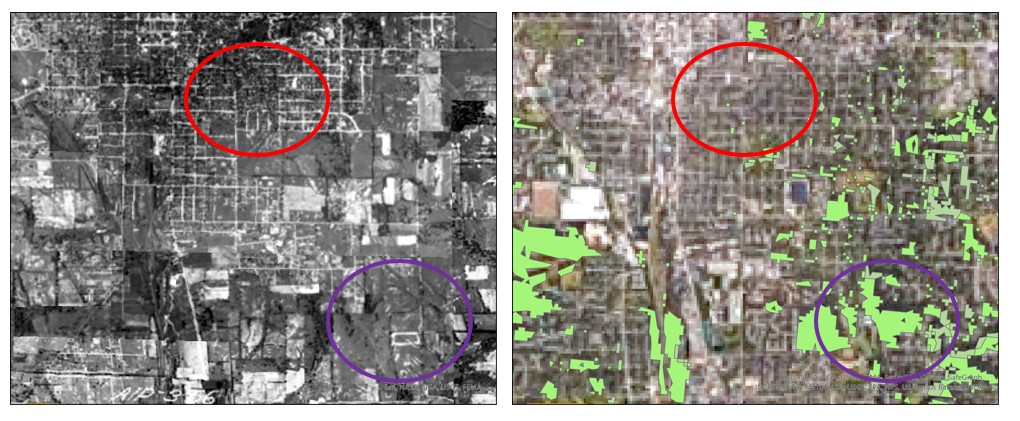Gretchen Luchauer, a researcher with BUFRG since Spring 2021, has been accepted into the Wildlife Sciences Program within the College of Forestry, Wildlife, and the Environment at Auburn University. She will begin work January 2023 with the start of the spring semester. An initial project for Luchauer will be the investigation of human dimensions of coral reef marine sanctuaries in Texas and Florida. Her work will be funded by NOAA.
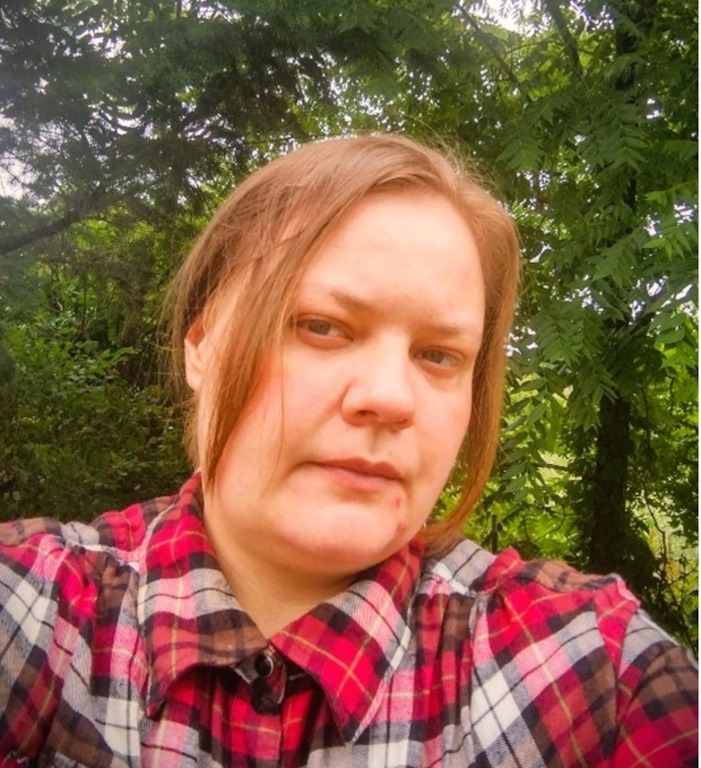
September 2022- BUFRG researcher to submit paper on urban streams and forested patches
Gretchen Luchauer is preparing her manuscript, “Urban Stream Corridors and Forest Patches – The Connections: A Case Study of Bloomington, IN”, for publication in the journal Urban Ecosystems. The research done for this project connects with and builds upon BUFRG work investigating urban forested patches and includes novel findings about connectivity between these two resources. Please see the abstract below for more detail.
Abstract- Streams and forests are connected ecosystems, but few studies have looked at the connectivity between streams and forests in urban environments. City-made decisions affect connections between streams and forests by isolating both streams and forests. Streams are often channelized or buried to reduce flooding and increase potential developable areas. Forests become fragmented and are removed unless they are protected by the public ownership, private ownership, or mixed governance arrangements. Historical choices in land usage affect the sites and sizes of current urban streams, forests, and development. This affects the distribution of impervious surfaces, a ubiquitous urban land cover type, which separates streams from forests. Despite these barriers to stream/forest interactions, cities can experience stream/forest connectivity. Seven Bloomington watersheds are ranked on their proportions of buried streams, channelized streams, forested hydrology, forested streams, urban forest patch cover, and impervious surface cover, along with historical presence of urbanization. Several watersheds demonstrate stream/forest connectivity, with five of these watersheds containing 50% or greater forested stream segments. Bloomington canopy cover reduces stormwater runoff by approximately 127 kiloliters per year. These forested areas reduce flooding, reduce nutrient loading, and reduces stream conditions associated with urban stream syndrome. Streams provide incentive for forest protection, aesthetic value, and recreational value. Understanding urban stream/forest connectivity can improve green infrastructure design and green space design, which improves urban resilience and better connects residents to the environment.
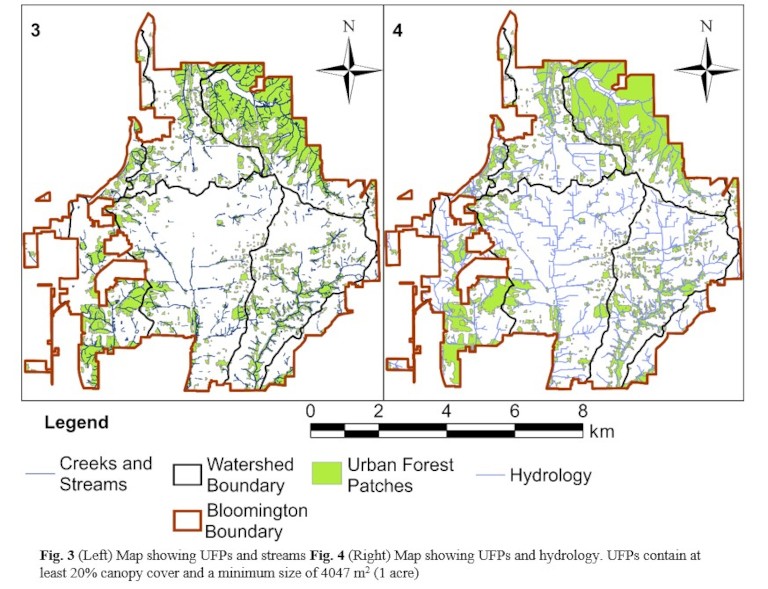
August 2022- New Woodland Campus tour featuring trees on IUB campus
Jeff Ehman, through Image Matters LLC, along with students Grace Pangburn, Kaitlyn Martin, Jules Wood, and especially Emily Faust, has created an enhanced digital version of the tour with navigational support. The eXperienceReality® (XR) Tour (Start Woodland Campus Tour) can be accessed through a web browser on any mobile device. Make sure to give permission for the application to access your phone’s location.
The tour is an opportunity to visit and learn about 23 trees, all located within walking distance of the Indiana Memorial Union building near the center of campus. The digital XR application directs users to each tree on the tour, with species including American beech, flowering dogwood, bur oak, and more. Many of these trees are estimated to be over a century old, with some predating the Civil War. Tour visitors can access a variety of detailed information using the application about each tree species, including background on history/lore, wildlife value, and expected habitat impacts due to climate change.
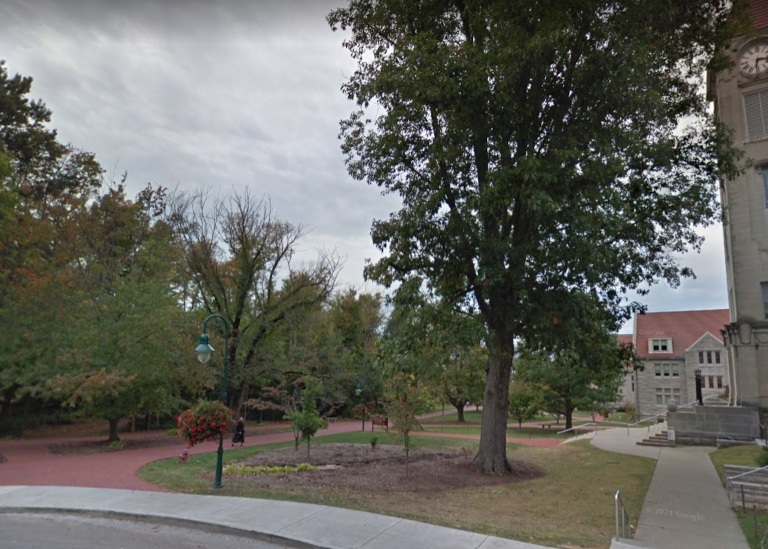
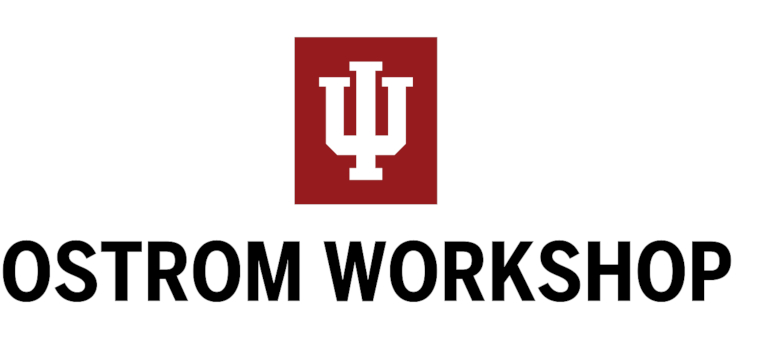
July 2022- BUFRG researcher awarded Fellowship at the Ostrom Workshop
Stephanie Freeman-Day has received a Fellowship from the Ostrom Workshop for the academic year 2022-2023. With the Workshop’s support, Freeman-Day will continue her research on sustainability and perseverance of urban forested patches. She specifically wants to learn more about governance practices that may be connected with a forested patch continuing as a community resource over time, particularly in the challenging biophysical and anthropogenic atmospheres typical in urban settings. Her research on urban forested patches began with a pilot project on IU Bloomington’s Campus. Past support of the Workshop has allowed the work to include the city of Bloomington. Now, her work will expand further to the more complex and urbanized environment of Indianapolis.
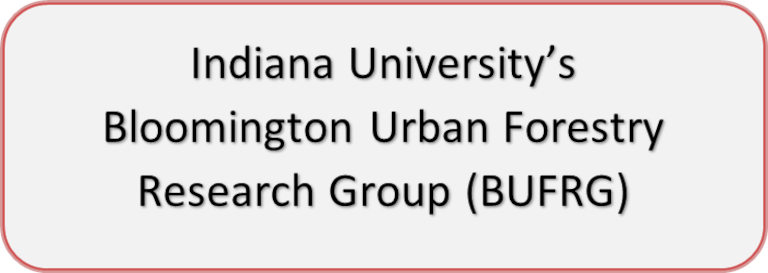
June 2022- Results from City of Bloomington Municipal Bond Pre-Planting Tree Survey
In early Spring, BUFRG researchers Stephanie Freeman-Day and Burney Fischer partnered with the Bloomington’s Urban Forestry Program to assess residents’ views on trees and urban forest management. Surveys were administered by mail ahead of a large-scale planting that began in Bloomington neighborhoods in April. Below is a general overview of the results.
- Trees in Bloomington are a topic of interest to many residents, as evidenced by a relatively high response rate to the survey.
- In three of the four planting areas, a majority of respondents felt like their neighborhood could use more trees. In the remaining neighborhood, more residents in that area felt neutral about the addition of trees to their area.
- Residents also see the need for the completion of alternative projects, especially street repair and flood mitigation.
- People generally agreed with statements describing ecosystem services, or benefits, of trees. They were most likely to agree to statements related to environmental sustainability, followed by economic sustainability, and then by social/human health sustainability.
- There is less awareness of Bloomington’s urban forestry program or the job of an arborist. Respondents knew the least about the location of the public right-of-way.
May 2022- New BUFRG Publication
Freeman-Day and Fischer’s recent paper, Indiana University’s Woodland Campus: A case study of urban forest patch sustainability was published in the March 2022 Special Issue of Arboriculture and Urban Forestry. This paper discusses the BUFRG investigation of green spaces on the IUB campus and their changes over time (see condensed abstract below). Our investigation into forested patches in urban areas has expanded to current research within the City of Bloomington, with the next phase being an expansion to Indianapolis.
Condensed abstract
Urban green spaces are increasingly seen as vital resources contributing to ecological and social health. This case study investigates forested and natural patches on Indiana University’s Bloomington campus. Data gathered through university archives includes historical maps and campus plans, for a study period beginning in 1884 with the university’s relocation to its current area. Historic aerial photos were compared with present satellite imagery using GIS. Findings include patterns where patches were indicated on maps, followed by a period where natural/forested areas were unindicated on maps followed by patches reappearing on maps and being suggested for preservation, with most patch loss as seen in the aerial imagery occurring when the patches were left unlabeled on maps.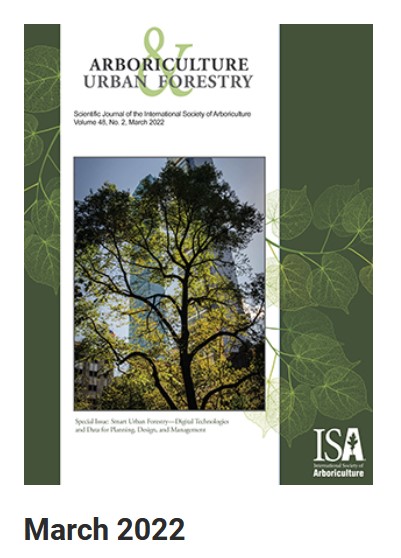
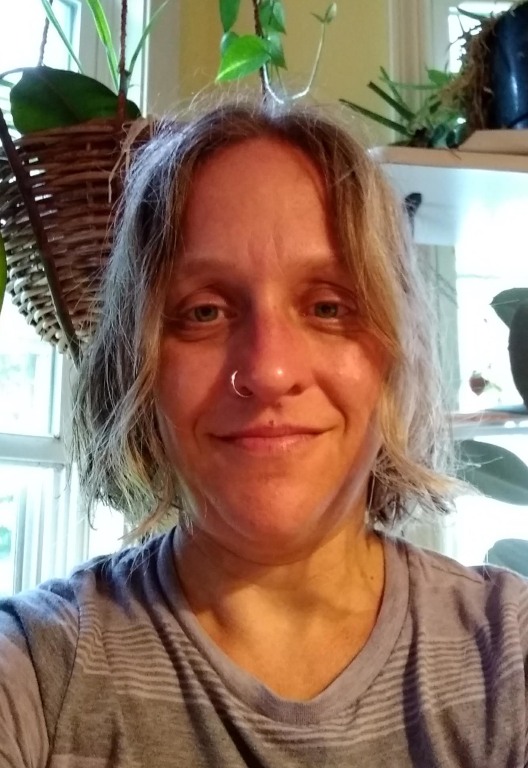
April 2022- BUFRG researcher Stephanie Freeman-Day to present at Ostrom Workshop Research Series
Freeman-Day will be presenting the BUFRG team's ongoing project on Bloomington urban forested patches at 12:00 on April 20, 2022. The talk will be given live at the workshop as well as on Zoom and will be recorded for later viewing. A brief abstact is included below.

March 2022- Two BUFRG researchers present at Indiana Academy of Science meeting
Gretchen Luchauer and Stephanie Freeman-Day each gave presentations at this year’s Indiana Academy of Science (IAS) annual meeting on March 26. Freeman-Day’s talk was titled Urban forested patches in Bloomington, Indiana- Analyzing sustainability over time. This presentation was an update on the ongoing BUFRG project and included preliminary results. Luchauer’s presentation built on Freeman-Day’s topic and was titled Urban stream corridors and forest patches- The connections: A case study of Bloomington, Indiana. She has been researching this topic with a goal of eventual publication of her findings. Abstracts for each presentation can be found on these links- Freeman-Day, Luchauer.
February 2022- Canopy Bloomington and Bloomington’s Housing and Neighborhood Development Department reach out to residents about BUFRG project
Work has been progressing on the urban forest patch project, where we are beginning a phase seeking knowledge from local residents about current and former patches within the city. This month, two local groups featured the patch project in their newsletters, Canopy Bloomington a local urban forestry nonprofit, and the City of Bloomington Housing and Neighborhood Development Department (HAND). Canopy Bloomington’s newsletter can be viewed here, and Bloomington’s HAND newsletter can be viewed here. We are looking forward to hearing from people with knowledge and insight on forested patches in Bloomington.
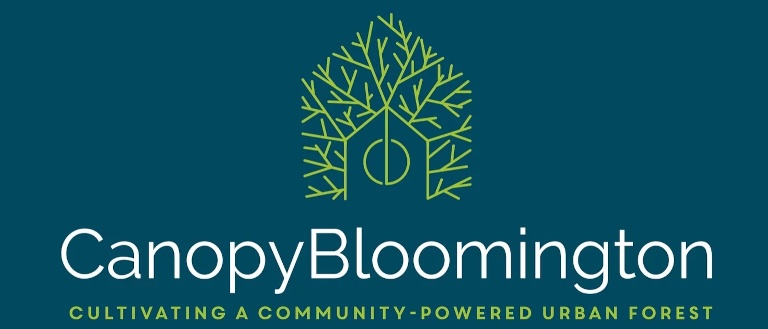

January 2022-Bloomington Urban Forest Patches – A study of perseverance and sustainability – Seeking input
The Bloomington Urban Forestry Research Group (BUFRG) at Indiana University-Bloomington is studying/exploring the perseverance and sustainability of urban forest patches (UFP’s) in the City of Bloomington. We have created a database of these UFP’s starting in 1939 and we are tracking their survival (perseverance) to the present as well as identifying new patches that have developed. Sustainability of patches relates to both ecological condition and governance impacts. We define an UFP as being at least one acre in size, at least 120’ wide and having a rather complete tree canopy. We are exploring the following characteristic of UFP’s, a) the current ecological condition, b) ownership and how it’s changed over time, and c) formal or informal community or neighborhood or individuals that have ‘protected’ the patch over time as well as pondering several other ways to characterize institutional impacts (rules).
We are interested in interviewing individuals or groups that have concerns or involvement in the past or currently for an urban forest patch within the current City of Bloomington boundary. Individuals or groups that have actually cared for, managed or protected an urban forest patch are of particular interest. Contact Professor Burney Fischer (bufische@iu.edu) or PhD Student Stephanie Freeman-Day (stjfreem@iu.edu).
